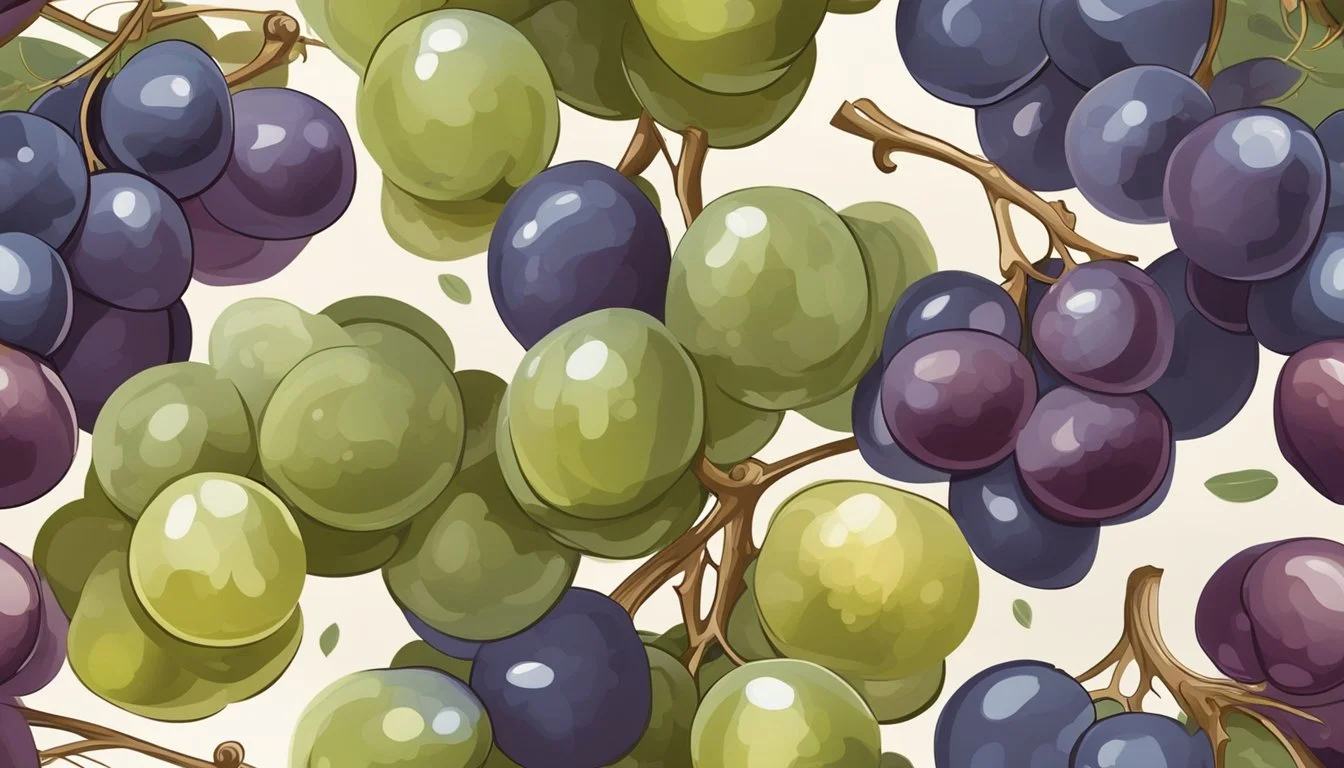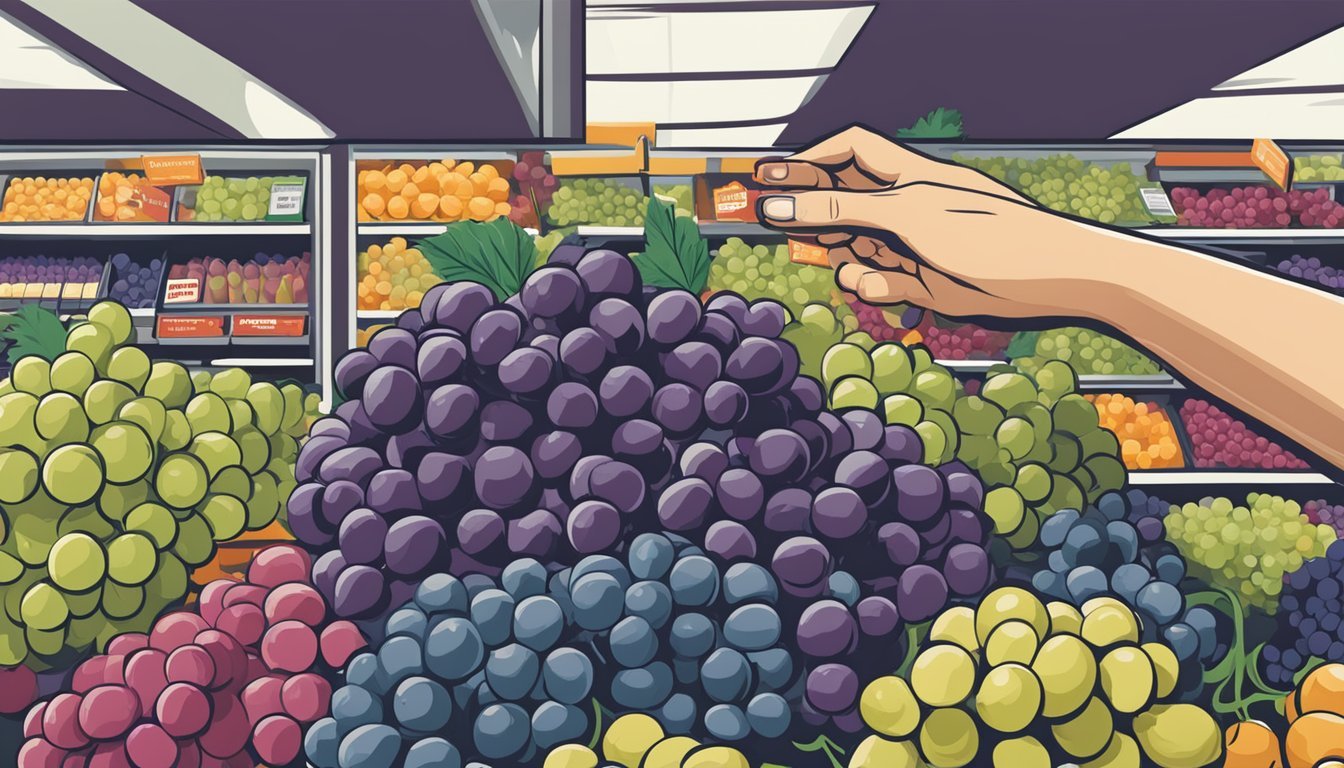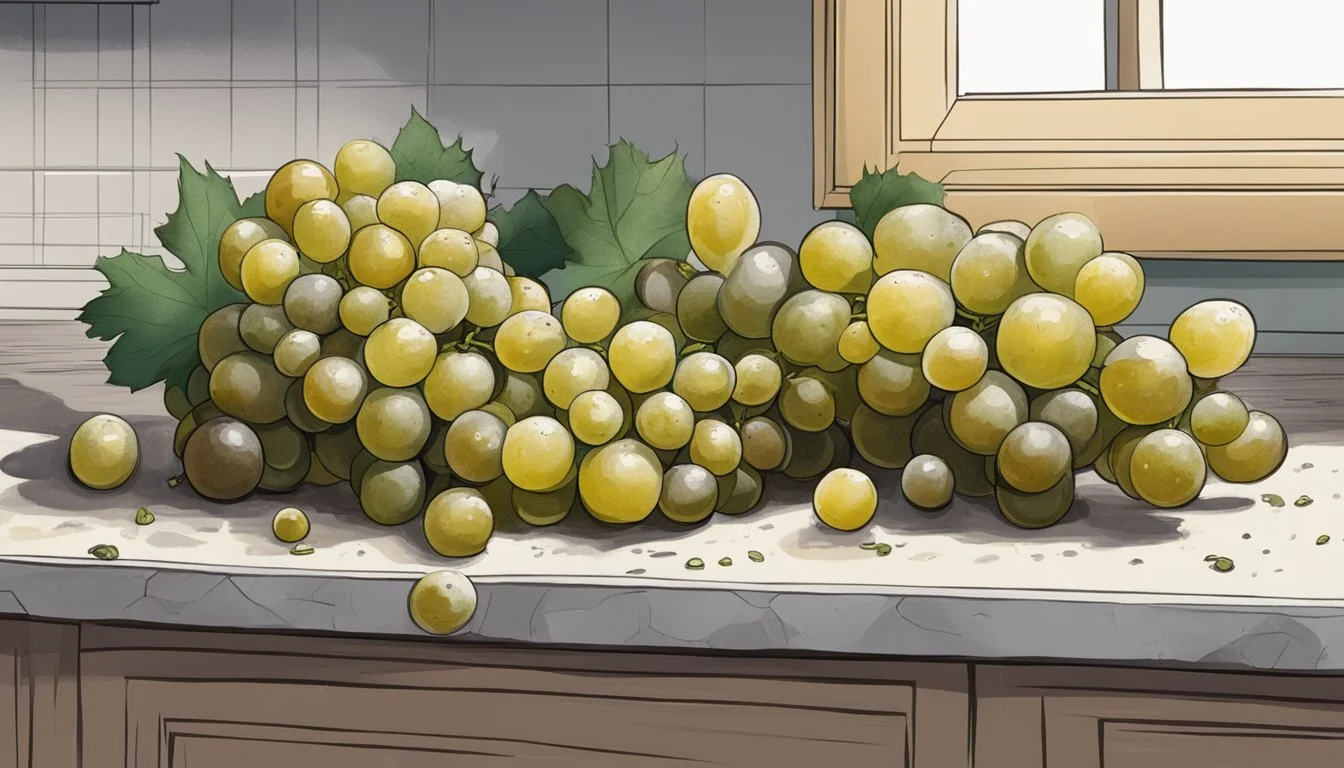Do Grapes Spoil?
Understanding Their Shelf Life
Grapes are a beloved fruit known for their sweet taste and versatility, whether eaten fresh, added to salads, or turned into wine. Like all perishable items, grapes can spoil, and understanding the signs of spoilage is key to preventing foodborne illnesses and ensuring maximum freshness. Grapes typically go bad due to microbial contamination by fungi, yeast, and bacteria, which can be detected through sour or vinegar-like smells and visible shriveling or browning.
To keep grapes fresh for as long as possible, proper storage is essential. Grapes should be refrigerated and kept on their stems to minimize moisture loss. Any grapes showing mold or an off-odor should be discarded immediately to avoid the spread of spoilage to healthy grapes.
Recognizing the signs of bad grapes can save you from an unpleasant snack and potential health risks. With the right storage techniques, grapes can stay fresh and tasty for up to two weeks, making them an ideal and safe addition to your diet.
Understanding Grapes
Grapes are a versatile fruit popular in various cuisines and applications, from fresh snacks to wines and raisins. This section explores their varieties, characteristics, nutritional value, and common uses.
Varieties and Characteristics
Grapes come in various types, such as green grapes, red grapes, and black grapes. These can be categorized further as table grapes, which are primarily consumed fresh. Each variety offers distinct flavors and textures:
Green Grapes: Typically crisp and mildly sweet.
Red Grapes: Sweeter with a rich flavor.
Black Grapes: Often have a deep, sweet taste.
The California Table Grape Commission highlights that optimal storage conditions maintain freshness, such as refrigeration at 30-40°F to preserve their quality for 1 to 2 weeks.
Nutritional Value and Uses
Grapes are rich in essential nutrients. They provide vitamins C and K, antioxidants, and fiber.
Snack: Fresh grapes make an excellent healthy snack.
Ingredient: Commonly used in fruit salads, smoothies, and culinary dishes.
Wine: Fermentation of grapes produces wine, a key use of this fruit.
Raisins: Dried grapes become raisins, another popular product.
Grapes not only enhance flavor but also contribute significant health benefits, such as aiding in digestion and boosting immune function.
Selecting and Purchasing Grapes
When selecting and purchasing grapes, pay attention to their appearance and stem quality. Check for the characteristic bloom and choose a reliable store.
Identifying Fresh Grapes
Fresh grapes should be plump, round, and firm to the touch. Their color should be vibrant, whether green, red, or black. Look for a white, powdery coating known as the bloom, which indicates freshness and acts as a natural preservative. Inspect the stem; it should be green and flexible. Grapes should be firmly attached to the stem, not shriveled or moldy.
Where to Buy Quality Grapes
Quality grapes can be found at local grocery stores, farmer’s markets, or specialty stores. Opt for stores with high turnover rates for produce. Bulk purchase options can sometimes offer fresher selections. Packaging should be dry and free from excess moisture to ensure the grapes are not starting to spoil. Always opt for grapes sold in ventilated containers.
Storing Grapes for Freshness
Grapes can maintain their freshness and flavor if stored correctly, which involves controlling temperature, humidity, and ensuring proper ventilation. The following guidelines help maximize the shelf life of grapes.
Temperature and Humidity Control
Temperature: Grapes should be kept in the refrigerator at a temperature between 30-35°F (0-2°C). This range helps slow the aging process and keeps them crisp. The crisper drawer is the best place to store grapes because it maintains a consistently cold environment.
Humidity: High humidity is crucial for grape storage. Keeping the humidity between 90-95% prevents the grapes from drying out and losing moisture. This is typically achieved in the crisper drawer of the refrigerator. If the humidity level is too low, use a damp paper towel in the drawer to maintain the necessary moisture.
Proper Containers and Ventilation
Containers: Use ventilated containers or perforated plastic bags for storing grapes. These containers allow air circulation, which helps prevent the buildup of moisture that can lead to mold. Avoid using airtight containers as they can trap moisture and ruin the grapes.
Ventilation: Good air circulation is essential in preventing spoilage. If grapes are stored in a plastic bag, ensure there are holes for ventilation. Alternatively, a shallow container with a breathable cover can be used. Proper ventilation helps in reducing the risk of mold and extends the freshness of the grapes.
Maximizing Shelf Life
Preparation: Rinse grapes only when ready to eat. Excess moisture from washing can speed up spoilage if the grapes are stored wet. If any grapes are spoiled or overripe, removing them can prevent the mold from spreading to others.
Room Temperature: Grapes kept at room temperature should be consumed within a day or two. Room temperature storage significantly shortens their shelf life and reduces their quality.
Reorganization: Arrange grapes in a single layer if possible. Stacking grapes can lead to bruising and faster spoilage. By spreading them out, each grape has more exposure to the cold air in the refrigerator, further extending their freshness.
Recognizing Spoilage
Understanding the signs of grape spoilage and the factors that influence decay can help ensure safe consumption and storage of grapes.
Signs of Bad Grapes
Texture: Fresh grapes should feel firm to the touch. Rotten grapes, on the other hand, will often be mushy or excessively soft. A simple squeeze test can reveal potential spoilage.
Smell: Spoiled grapes can emit a sour or vinegary odor. Taking a quick sniff of the grape container can help detect any off odors that indicate spoilage.
Color: Watch for discoloration. Fresh grapes maintain a consistent hue, whereas spoilage may result in darker spots or an overall faded appearance. Moldy grapes will exhibit white or grayish mold growth.
Mold: The presence of mold on the stems or clusters is a clear sign that the grapes have gone bad. Mold appears as fuzzy or powdery patches and can spread quickly.
Factors Influencing Decay
Moisture: Excess moisture in storage can accelerate the decay process. It's important to pat dry grapes after washing them to reduce moisture levels.
Temperature: Grapes should be stored at lower temperatures to maintain freshness. Leaving grapes out at room temperature can lead to quicker spoilage.
Air Circulation: Proper air circulation within the storage container is crucial. Using an air-tight container or a zip-lock bag helps maintain an optimal environment.
Protective Layer: The natural protective layer on grape skins can prevent spoilage. Washing should be done just before consumption to avoid removing this layer prematurely.
Creative Uses for Grapes
Grapes are versatile fruits that can be used in numerous creative ways. They are not only delicious but can also be preserved for later use, ensuring you get the most out of them.
Culinary Inspirations
Grapes add a juicy and sweet flavor to many dishes. They are perfect in fruit salads, where their crisp texture contrasts beautifully with other fruits. Additionally, grapes are often paired with cheese, making them ideal for an elegant cheese platter.
In savory dishes, grapes can be used to create a refreshing grape and feta salad, combining their sweetness with the tangy taste of feta. Cocktails and smoothies also benefit from the addition of grapes, which add natural sweetness and a juicy texture.
Raisins, which are dried grapes, are another culinary use. They add sweetness to baked goods and savory dishes alike. For a unique twist, grapes can also be roasted with olive oil, salt, and pepper to create a rich, caramelized flavor suitable for salads and stuffing.
Freezing and Preservation
Freezing grapes is an excellent way to preserve their freshness. Frozen grapes make a delightful snack, particularly in the summer. Simply washing and freezing them on a baking sheet prevents them from sticking together. Once frozen, they can be stored in a freezer bag.
Frozen grapes can also serve as ice cubes in drinks, keeping beverages cold without diluting their flavor. Another preservation method is making grape juice or wine, where the grapes' natural sweetness is perfectly captured.
In summary, grapes can be frozen for use in smoothies or to be enjoyed as icy treats. This simple method ensures that grapes remain accessible and enjoyable even when they are out of season.
The Lifecycle of Grapes
The lifecycle of grapes encompasses various stages from ripening on the vine to their arrival at the grocery store. Understanding these stages is essential for appreciating the effort behind every grape you purchase.
Ripening Process
Grapes undergo a fascinating transformation during the ripening process. Initially, grapes are green and hard as they develop on the vine. As they ripen, they change color, reaching shades that can range from purple-red to golden yellow, depending on the variety. This color change is due to the breakdown of chlorophyll and the accumulation of anthocyanins and carotenoids.
At the same time, grapes increase their sugar content, while their acidity decreases. This shift makes them sweeter and more palatable. The California Table Grape Commission notes that this stage is crucial for determining the taste and quality of the final product. Proper timing in harvesting—when the sugar and acidity balance is optimal—is key to high-quality grapes.
From Vine to Store
Once grapes are ripe, they are carefully harvested. Harvesting can be done by hand or machine. The next step is to remove stems and leaves, a process that helps in preserving the quality of the grapes. These grapes are then sorted and packed to prevent damage during transportation. Packing techniques, such as using padded containers, help extend the shorter shelf life of the fruit.
Transported grapes must maintain a cool temperature to reduce spoilage. They are then distributed to grocery stores where consumers make their purchase. Throughout this journey, the grapes' hue and freshness are closely monitored. Consumers are advised to store grapes in the refrigerator to maintain their quality until they are ready to be consumed.




